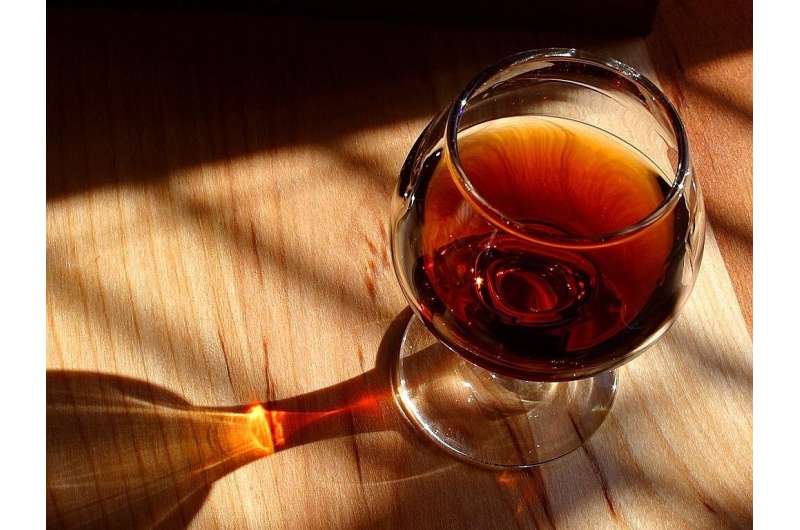Detecting aromas in aged cognac

For connoisseurs of wines and spirits, part of the enjoyment is noting the various flavors and scents that are revealed with each sip. Aging transforms alcohol's aroma further, especially in cognac, a type of twice-distilled fortified wine. Now, researchers reporting in ACS' Journal of Agricultural and Food Chemistry have identified a few compounds not previously known to contribute to an aged cognac's complex aroma.
Smell plays a key role in the perception of flavor, and in alcoholic spirits these aromas are a result of an array of volatile organic compounds that transform over time. Unlike other liquors, cognacs are aged for upwards of several decades before they are blended into a final product, giving them a unique profile that can be difficult to characterize. Previous research has focused on "young" cognac distillates, which have floral, fruity notes, but little is known about how aging contributes to aroma. The aging process is impacted by compounds from the oak barrels used to house the cognac distillate, as well as evaporation of ethanol over time, known as "the angels' share." To further uncover what olfactory factors are at play in aging cognac, Fannie Thibaud, Marie Courregelongue and Philippe Darriet combined analytical and sensory technologies.
The researchers began with a series of cognac distillates from a well-known producer, ranging from just under a decade to nearly 50 years in age. From there, they used a combination of gas chromatography/olfactometry and mass spectrometry to separate and smell the various components of the distillates, as well as to identify and measure them. Of the myriad volatile compounds found with this method, several terpenoids—which give wines their floral notes—were identified for the first time in cognac. Finally, using the collected data, the team conducted a sensory panel to see how some of the cognac compounds, when mixed together, contribute to aging aromas. For example, they found that (Z)-whisky lactone and (E)-β-damascenone enhanced the sensation of a mix of terpenes found in aged distillates, but these compounds did not appear to have an effect on a terpene mix typical of younger distillates. These results provide new insights into what makes cognac tick, and could help manufacturers develop better-tasting liquors.
More information: Fannie Thibaud et al. Contribution of Volatile Odorous Terpenoid Compounds to Aged Cognac Spirits Aroma in a Context of Multicomponent Odor Mixtures. Journal of Agricultural and Food Chemistry DOI: 10.1021/acs.jafc.9b06656
Journal information: Journal of Agricultural and Food Chemistry
Provided by American Chemical Society




















